
views
The skeletal and muscular structure is more important in herd bulls than in cows, however cows must also have good conformation and be in body condition in order to be deemed good, solid and high productive cows that are suitable for your breeding herd.
Steps
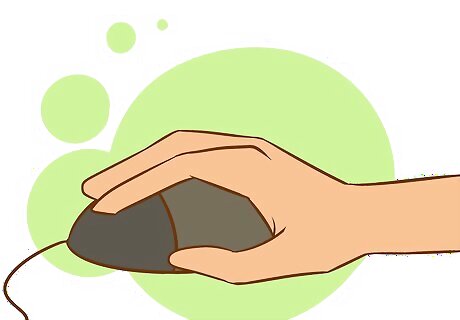
Start by looking at pictures. You can start judging conformation of a bull, cow, steer or heifer just by looking at pictures on the Internet or in any book or magazine that has cattle in it. Your local agricultural newspaper is also a good source, as it often has advertisements for bull sales showing the "top bulls" that are going to be for sale, according to their breed (i.e., Angus, Red Angus, Hereford, Simmental, Limousin, Beefmaster, Brahman, etc.) If you do a search on the Web and type in "bull sales" or "cattle sales" in the heading of such popular search engines as Google or Yahoo!, you will find different pictures of cattle to study from. More often than not, these kind of pictures are the best to critique from, conformationally speaking.
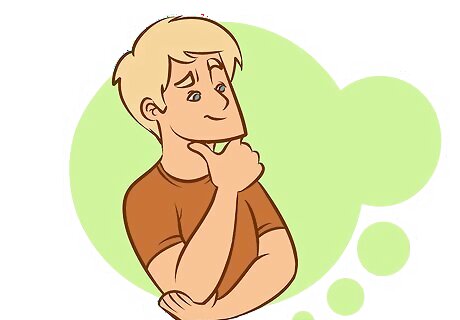
Start by first looking at the overall condition and body of the animal, before closing in and doing a close study of the bull or cow, from head to tail to feet. The following is a guideline of what characteristics ideal in a typical bovine how they may be faulty.
Overall Body Conformation

The overall body conformation of a bull and a cow should be deep with plenty of capacity. They should also be long-bodied, but not too long, nor too short. Long-bodied cattle tend to have lower quality carcass grades and are later maturing. Short-bodied cattle tend to put on fat more quickly than what is desirable, and also have poor growth rates.
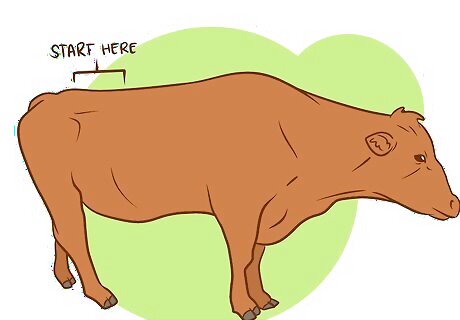
A beef animal should be moderately trim in its underline and brisket to prevent excessive waste. At the same time, it should show good depth indicating body capacity. The chest floor, as well as spring of ribs, should exhibit good body capacity and overall productiveness. Adequate width between front and hind legs also indicate good and muscling body capacity.
Topline, Shoulder and Heart-Girth Conformation

The Topline. The topline is the spinal column from the neck to the tailhead of an animal. Most of the topline is taken from the last two thirds of the animal, from the middle of the shoulders to the rump. The top line must be straight, with no spinal protrusions or bumps along it. Roach-backed bulls are strongly selected against because this impedes a bull's ability to breed properly and to travel long distances without creating some sort of leg or spinal injury sometime in the future. It's not so bad in cows, but it can make them cull themselves in a matter of time. Sway-backed cattle are also selected against, as this can also hamper movement and ability to properly displace weight on the feet. Sway backs are typically attributed to backs that are too long in length, and results in weakness in structural support of the vertebrae, and also causes irregular-shaped loin muscles. Good loin muscle is correlated to high fertility, and bad or weak loin muscle is a sign of poor fertility.
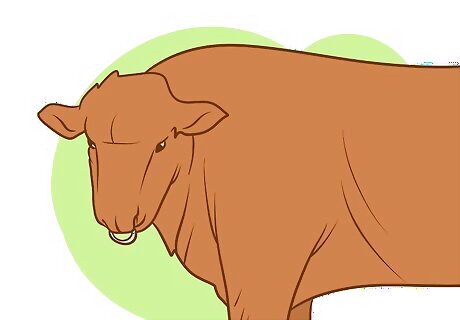
Shoulders. Good shoulder width in either cows or bulls indicates good capacity in the ribcage, where the heart and lungs are located. In bulls. Generally, the wider the shoulders in bulls, the better. A bull should have shoulders that are 2 inches (5cm) or more wider than his rump. Wide shoulders indicate masculinity in bulls and is the highest indicator of reproductive efficiency. He is also able to sire sons, when mated to proper phenotypical (feminine) cows, that make great herd sires. His daughters will reach puberty early, breed back and wean a heavy calf. Wide shoulders usually means a larger scrotum, since masculinity in a bull is in the wide, deep shoulders and short neck with a rump similar in width to the front. Yearling bulls with good shoulder widths correlates with uniform gestation periods, birth weights, better calving ease and more uniform weaning weights. In cows. Shoulder width should not exceed the width of the rump by more than +/- half an inch (1.27cm). Too deep and wide a shoulder leads to reduced femininity and lack of good milk production. Too narrow or shallow, and the cow is a higher maintenance and even poses reproductive issues and increased risk of genital defects in herself and her daughters and sons. Shoulders in cattle should be of even length, and not go over the topline (which is typically called "coarse-shouldered"). Shoulders should also not be open nor extremely heavy (where they can exceed rump width by over 2 inches/5cm), as they are often indicators of calving difficulties.
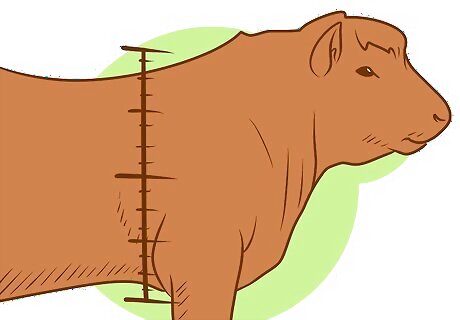
The Heart-girth. The heart girth is the area from behind the shoulders down to behind the elbows. Good depth of heart girth in cattle is a sign of good forage convertibility and good feet and leg conformation. The heart girth is where the organs (heart, lungs, etc.) sit, enabling the animal to do and live as it does. The circumference of the heart girth should be equal to or greater than the top line. The closer in measurement the heart girth is in the animal, the more adaptable, vigorous and efficient the animal will be. Smaller heart girths are undesirable, because they can allow bad conformation in the front feet (feet toe out, for instance), they cannot do well in grass alone, and are an overall high maintenance animal.
Rump and Flank Conformation

Rump characteristics: The rump of an animal should be deep, wide, long and level in its top. The loin in bulls should be allowed to bow out slightly over the rump's topline. Rump length in bulls and cows. Rump length should not be too tall nor too short. Tall rumps often indicate poorer muscling ability and thus higher maintenance, especially on grass. Taller animals tend to finish later and require more energy-based feeds to actually reach finished weight. The ideal rump length in cows is 38 percent to 40 percent of two thirds of the topline. Rump width in bulls and cows. The greater the width of the rump, the better. Wider rumps and hips in cows is a sign of good calving-ability and fertility, as well as early maturing and low maintenance. Wide rumps in bulls correlate to wide shoulders and shorter necks, which is indicative of masculinity.
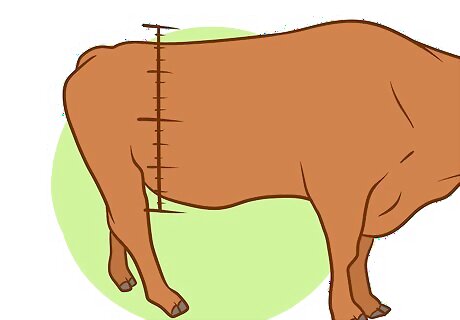
Flank conformation. The higher the flank circumference is than the heart-girth, the higher the reproductive ability of the cow. This is because the flank is located right on the hindquarters of an animal.
Head Conformation
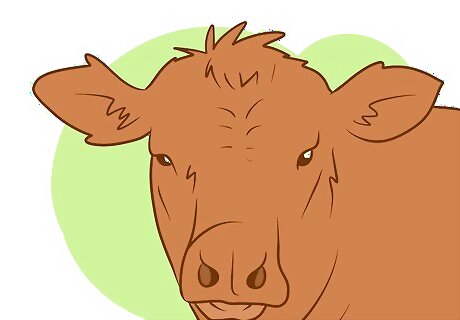
The Forehead: The forehead (from the poll [the top-most point of a bovine's head] to just above the eyes) in a bull should be broad and wide, but not so much so that it makes him look like he has a "pallet head," or a forehead that is flat and bony without much characteristic as far as masculinity is concerned. In most bulls, like in Charolais and Herefords, curly hair on the forehead commonly symbolizes a bull's good fertility and masculinity. Calving-ease bulls (those bulls who sire calves that are born small and light-weight, according to breed standards) tend to have a smaller head in proportion to the rest of their body than bulls who are not considered calving-ease.

In cows and heifers (and even in steers), head characteristics should be the opposite of a bull's. She (or "he" for a steer) should look more feminine and refined than a bull of her breeding. For instance, Hereford or Charolais cows and heifers do not have the curly foreheads of their male counterparts.
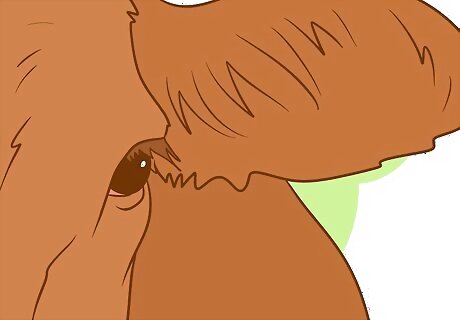
The Eyes: Funny though it seems, eye structure in cattle is quite important, especially in areas where tall plants, dust, and other foreign objects can easily enter the eye and cause such problems as pink eye or cancer eye. Pink eye and cancer eye are serious eye diseases in those animals that lack pigment around their eyes and tend to have poor eye conformation. The ideal eye structure of a bovine should not be bulged out with the lashes almost horizontal with the ground. Eyes should be well-set, or placed well in the eye-sockets of the animal. Cattle with well-set eyes have lashes that are more parallel to the side of the animal's face than to the ground. Good pigmentation (not partial) in and around their eyes are far less predisposed to eye injury and cancer eye, as well as sun glare, UV light and reduced fly-related issues.
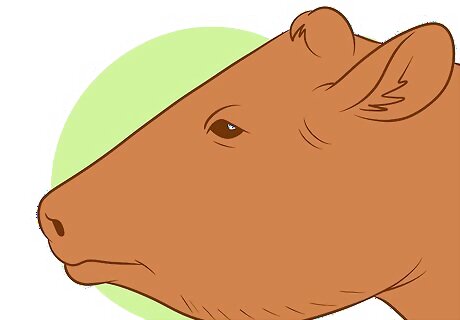
The Jaw: A bovine's jaw should be evenly set, neither undershot nor overshot. They should be free of abscesses, swellings, and any other lesions or injuries that would impede the animal to eat properly nor gain in weight like it usually should. Often undershot/overshot jaw characteristics are genetic defects that are passed on to offspring. Note, though, that young calves that have undershot or overshot jaws tend to grow out of that and retain normal jaw conformation as they grow older. It can be serious in other animals though, and these are the ones that need to be culled.
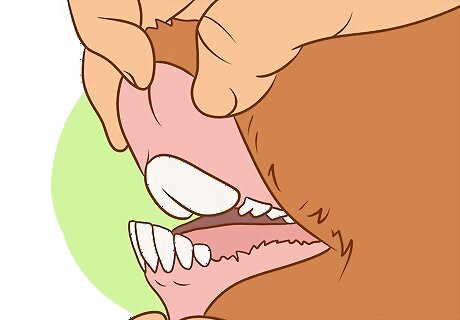
Teeth: Teeth impact production because they are needed to graze and break down foodstuffs into smaller particles, and must be in good condition to do so. Teeth that are worn down to the gums affects body condition, pregnancy status and production. Depending on the vegetation that cows are on, most wearing, on average, begins to show between five to seven years of age. By age twelve, many or most of the teeth may be triangular in shape or worn smooth to the gum line. Sandy soil environments tend to have a greater impact on teeth wear than any other environment. Cows and bulls with teeth that are down to the gums or that have deteriorated should be culled from the herd.
Neck Conformation

Neck conformation in bulls is very important. A good bull should have a thick crest over his neck as well as a short neck. Short necks in bulls are a good indicator of libido and high testosterone, as well as larger scrotal circumference (which relate to higher levels of hormones) and wider, more muscular shoulders. Short-necked bulls tend to sire wide-rumped (more depth in the hindquarters) daughters, and daughters that mature early. Bulls with longer necks. On the contrary, bulls with longer necks (and therefore less of a crest) are later maturing, have poorer libido and testosterone levels, are hard-keepers and sire daughters that are later-maturing. Bulls with longer necks aren't worth the effort to keep around because of their overall lack in masculinity and inferior genetics.
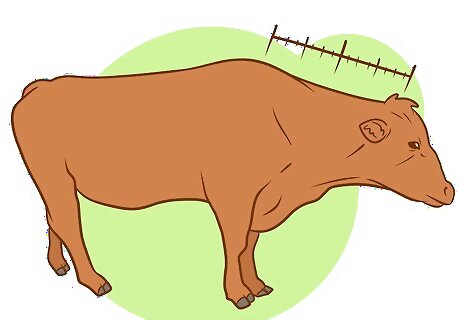
Neck conformation in cows draws a line between too long and too short. Long-necked cows tend to be too dairy and higher maintenance. This is because cows that have longer necks tend to be over-productive milkers, and because of this higher selection in milking ability, will be later maturing and late breeders. Cows that have too short of necks, on the other hand, are more masculine in conformation, with big shoulders, poorer milking ability and loss of femininity. A cow should have a neck length that is half the length of her body, neither too long nor too short.
Scrotal/Udder Conformation
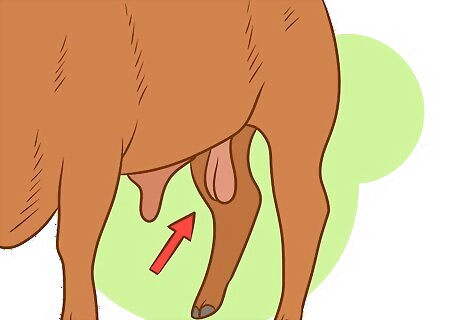
Scrotal conformation in bulls: The scrotum of a bull should look football shaped, and for most yearlings, scrotal circumference should range from 35" to 40", depending on the breed. Smaller bulls tend to have smaller scrotal circumferences than big bulls. Irregular shaped testicles (uneven size, epididymis not at the bottom of the testes, etc.) can be genetically passed on to sons and daughters. Scrotal conformation in sons could be worse, and in daughters, udder conformation could cause decrease in milking ability, large teats, sagginess in the udder, and cause the udder to break down early.

Teat and udder conformation in cows: A cow should have an udder with uniform quarters and small teats. Each teat should be equally spaced under each quarter. Teats should not be large, as large teats make it more difficult for a newborn calf to latch onto and suckle from or to get adequate colostrum from. The udder should the tucked neatly away in between her hind legs, with a level udder floor and no exhibition of any quartering (i.e., one quarter is larger than the other). The udder should blend in with the lower part of the belly quite smoothly, with no V or crevice between the udder and the belly. It should attach high up behind the back legs, and not be tilted up in front or down in the back. The median suspensory ligament is responsible for proper attachment to the cow's body wall. A poor suspensory ligament will allow the udder to hang down too far from the body and subjects the udder to serious problems like mastitis and risk of injury.

Poor udder conformation in your beef or dairy herd will reduce udder longevity of your cattle. Like in dairy cows, producers that select for more milk production in terms of higher maternal weaning weight and milk Expected Progeny Difference (EPD) values have a moderate genetic antagonism with udder quality. Thus, it is always best to match genetics with environmental conditions you are raising your cattle in, and never go to extremes, especially with beef cows.
Conformation of the Feet and Legs
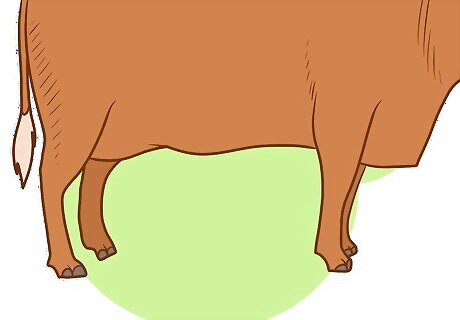
Legs should be squarely set under each of the four corners of the animal and be reasonably, naturally straight. The movement of the animal should have a free and easy gait as opposed to being uncoordinated, slow, stiff and/or restricted. Animals with uneven, small, curled or twisted toes and/or crooked feet usually become lame.

Front leg conformation. Common issues that come with the front legs and feet are conditions like being buck-kneed, calf-kneed, toed-out and toed-in. Buck-kneed cattle tend to have an over-extension of the knee, making them seem like they're going to bend down onto their knees instead of standing straight. Calf-kneed cattle are the opposite of buck-kneed, with the knee extending backwards, pushing the feet forward. This condition is also called back-at-the-knee. Toed-out or splay-footed cattle have knees that are pointed in towards each other causing their front feet to face outward than straight ahead. Cattle tend to have a gait where they swing the feet out and back in. Toed-in or pigeon-toed cattle are the opposite of being toed-out (knees pointing out instead of in), and move the opposite way as well: swinging their feet inward then out as they walk.
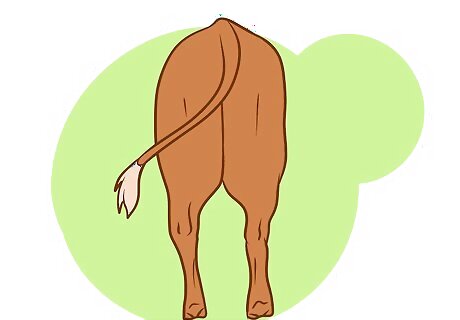
Hind leg conformation: The common issues that come with bad conformation of the hind legs always tends to start at the hocks and the pasterns. If the hocks and pasterns are positioned wrong, then this affects the stance of the feet. For instance, a bovine with cow-hocked legs will have back feet that are toed-in, and a bovine that is wide-at-the-hocks have back feet that are toed out. Cow-hocked or splay-footed cattle are those that have their hocks pointing in towards each other. Wide-at-the-hocks or pigeon-toed is opposite of the previously mentioned, with the hocks pointing away from each other at an outwards angle. Both bad hind leg conformation make the animal make a twisting, rotation action when moving. Post-legged animals have very little curvature in the hocks. Animals with post-leggedness are predisposed to stifle injury and often have a short, stilted stride. Sickle-hocked animals are the extreme opposite to being post-legged: the animal has too much angle in the hocks, making it sit back on the heels of the foot and develop hock weaknesses. Narrow-stance at the hind legs is where the hind legs are literally so close together that you can't see the front of the animal. Animals with this bad conformation may also be slightly cow-hocked, and be predisposed to soreness and raw skin from the hind feet rubbing together so often. Animals with this stance tend to walk with each foot moving in on each other or in towards the middle of their body.
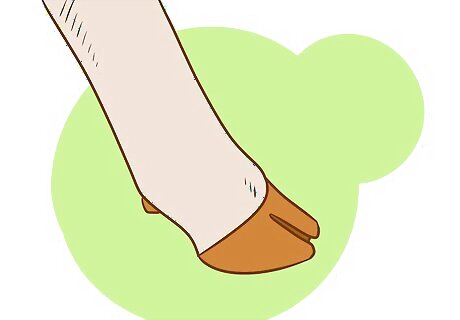
Toes: Toe structure of the bovine will also have an impact on mobility and stance. Bulls and cows that have overgrown toes will not walk normally, and walk on the back of their heels than on their whole foot. Toes of uneven width and length will also affect the mobility and weight distribution of the animal. Bulls with a condition called screw claw, which is a highly heritable condition and occurs when one toe is thinner than the other and will grow over the other toe, will be predisposed to lameness and lack of proper mobility. Bulls with this condition should be culled. Other toe abnormalities to watch out for are: Short hooves that are worn at the toe, indicating the foot has been dragged as the animal walks Long, narrow hooves with shallow heels, often associated with weak hocks and pasterns and sometimes form scissor hooves (toes cross over each other as they grow).











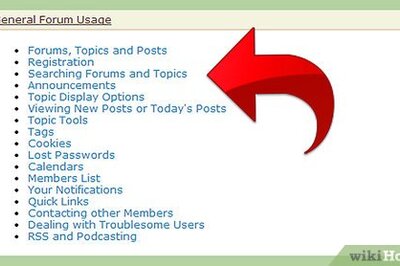




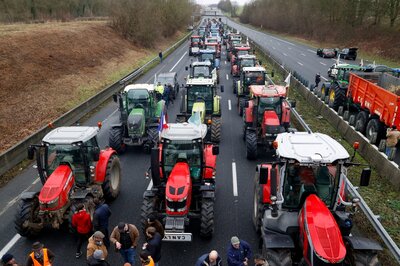

Comments
0 comment